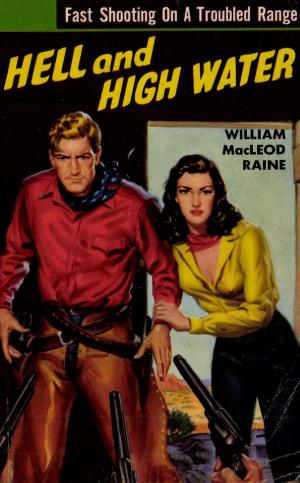The Siege Of Lucknow: A Diary [Illustrated Edition]
Nonfiction, History, Asian, India, Military, Other, British| Author: | Lady Selina Inglis | ISBN: | 9781782892281 |
| Publisher: | Normanby Press | Publication: | June 13, 2014 |
| Imprint: | Normanby Press | Language: | English |
| Author: | Lady Selina Inglis |
| ISBN: | 9781782892281 |
| Publisher: | Normanby Press |
| Publication: | June 13, 2014 |
| Imprint: | Normanby Press |
| Language: | English |
[Illustrated with over one hundred maps, photos and portraits, of the battles of the Indian Mutiny]
By 1857, the British power in India had been largely undisputed for almost fifty years, however, the armies of the East India Company were largely recruited from the native people of India. This inherent weakness would be exposed during the events of the Indian Mutiny of 1857-1858, as the Sepoy soldiers turned against their erstwhile British employers.
The events that led up to the Revolt were many and varied, including British highhandedness, ignorance of local customs and religious values, and incendiary propaganda. It is generally argued that the spark that lit the flame was the rumour that the newly issued rifle cartridges would be greased either with tallow, derived from beef and thereby offensive to Hindus, or lard, derived from pork and thereby offensive to Muslims. The enraged soldiers mutinied across a number of Indian States, taking Delhi, besieging Lucknow, and revolting in Oudh.
One of the enduring events during the entire revolt was the siege and successful defence of Lucknow, by a gallant band of British soldiers, loyal Indians and many women who were swept up in the chaos of the fighting. Once it became clear that the Mutiny would reach Lucknow, the local commander Sir Henry Lawrence did what he could to make the area as fortified and defensible as possible; however, overlooked on all sides by high buildings, without wide ditches or great walls any prolonged resistance would be very difficult. Sir Henry died soon after the siege began and command fell to Lieutenant-Colonel Sir John Inglis, at his side like many of the defenders was accompanied by his wife and children. Lady Inglis kept a diary of the siege with great regularity and the vivid detailed descriptions of the daily shelling and sniping serve as perhaps the best account of the siege written to date.
A fascinating, atmospheric and often shockingly graphic diary.
[Illustrated with over one hundred maps, photos and portraits, of the battles of the Indian Mutiny]
By 1857, the British power in India had been largely undisputed for almost fifty years, however, the armies of the East India Company were largely recruited from the native people of India. This inherent weakness would be exposed during the events of the Indian Mutiny of 1857-1858, as the Sepoy soldiers turned against their erstwhile British employers.
The events that led up to the Revolt were many and varied, including British highhandedness, ignorance of local customs and religious values, and incendiary propaganda. It is generally argued that the spark that lit the flame was the rumour that the newly issued rifle cartridges would be greased either with tallow, derived from beef and thereby offensive to Hindus, or lard, derived from pork and thereby offensive to Muslims. The enraged soldiers mutinied across a number of Indian States, taking Delhi, besieging Lucknow, and revolting in Oudh.
One of the enduring events during the entire revolt was the siege and successful defence of Lucknow, by a gallant band of British soldiers, loyal Indians and many women who were swept up in the chaos of the fighting. Once it became clear that the Mutiny would reach Lucknow, the local commander Sir Henry Lawrence did what he could to make the area as fortified and defensible as possible; however, overlooked on all sides by high buildings, without wide ditches or great walls any prolonged resistance would be very difficult. Sir Henry died soon after the siege began and command fell to Lieutenant-Colonel Sir John Inglis, at his side like many of the defenders was accompanied by his wife and children. Lady Inglis kept a diary of the siege with great regularity and the vivid detailed descriptions of the daily shelling and sniping serve as perhaps the best account of the siege written to date.
A fascinating, atmospheric and often shockingly graphic diary.
![Cover of the book The Siege Of Lucknow: A Diary [Illustrated Edition] by Lady Selina Inglis, Normanby Press](https://www.kuoky.com/images/2014/june/500x500/9781782892281-AUbP_500x.jpg)
![Cover of the book Artillery In Korea: Massing Fires And Reinventing The Wheel [Illustrated Edition] by Lady Selina Inglis](https://www.kuoky.com/images/2015/november/300x300/9781782899631-nwwN_300x.jpg)


![Cover of the book Advice And Support: The Early Years 1941-1960 [Illustrated Edition] by Lady Selina Inglis](https://www.kuoky.com/images/2014/august/300x300/9781782899068-i9lY_300x.jpg)

![Cover of the book Vietnam Studies - Sharpening The Combat Edge: The Use Of Analysis To Reinforce Military Judgment [Illustrated Edition] by Lady Selina Inglis](https://www.kuoky.com/images/2014/august/300x300/9781782893639-AqxI_300x.jpg)

![Cover of the book Stalemate: U.S. Marines From Bunker Hill To The Hook [Illustrated Edition] by Lady Selina Inglis](https://www.kuoky.com/images/2015/november/300x300/9781786256072-vFZF_300x.jpg)
![Cover of the book The Invasion of the Crimea: Vol. IV [Sixth Edition] by Lady Selina Inglis](https://www.kuoky.com/images/2017/january/300x300/9781787203457-OVTQ_300x.jpg)


![Cover of the book U.S. Marine Operations In Korea 1950-1953: Volume I - The Pusan Perimeter [Illustrated Edition] by Lady Selina Inglis](https://www.kuoky.com/images/2015/november/300x300/9781786254269-p1Qv_300x.jpg)


![Cover of the book U.S. Marine Operations In Korea 1950-1953: Volume V - Operations In West Korea [Illustrated Edition] by Lady Selina Inglis](https://www.kuoky.com/images/2015/november/300x300/9781786254306-vY0V_300x.jpg)